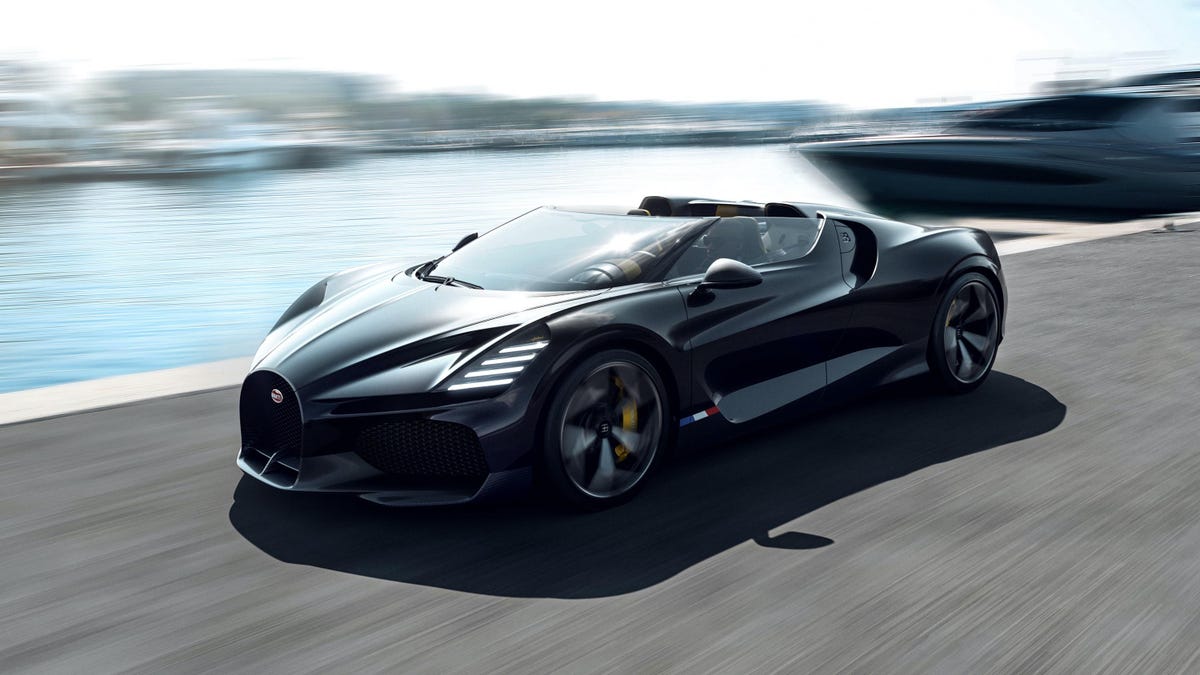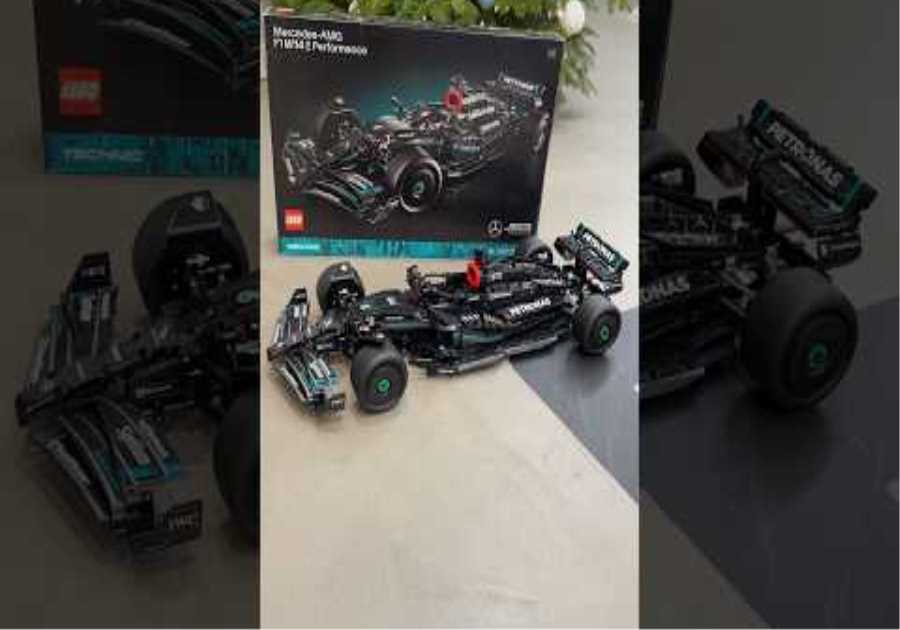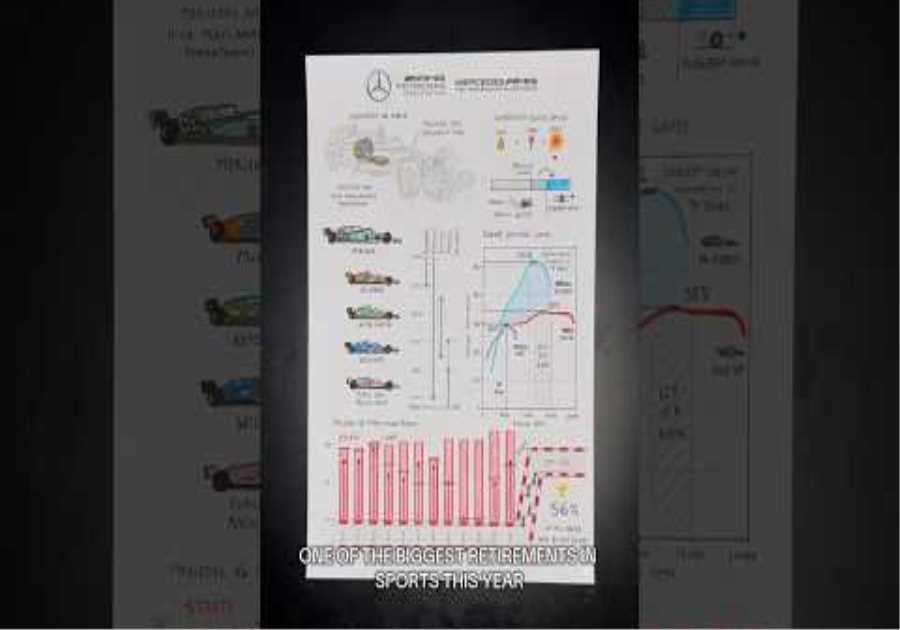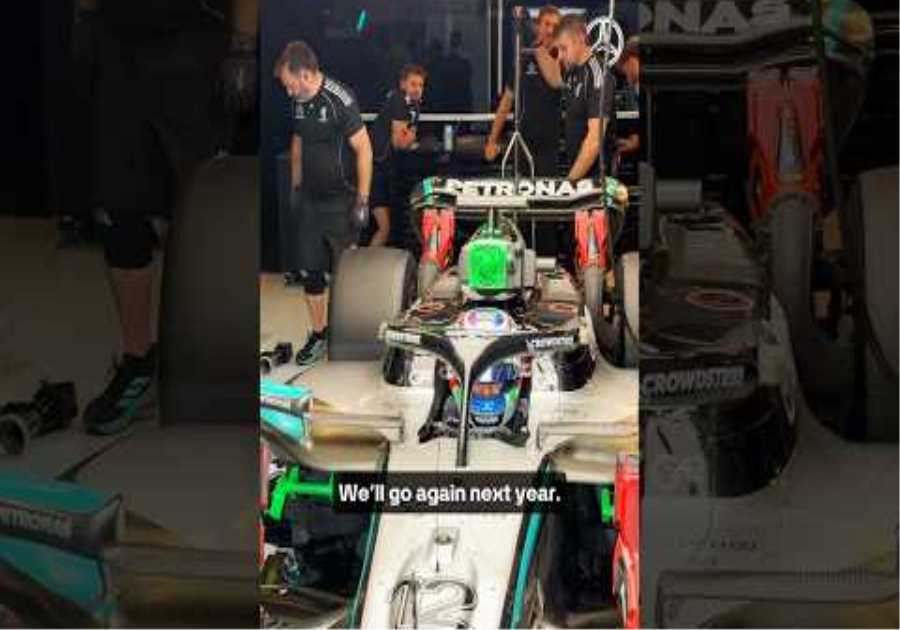
Bugatti Mistral is the last of its kind, the last Bugatti of the Chiron blood line. Bugatti wants … [+]
Bugatti
Bugatti Mistral is the last of its kind, the last Bugatti of the Veyron and Chiron blood line. Bugatti wants to produce no more than 99 examples of the spyder. powered with the 16-cylinder engine developed in the Ferdinand Piëch Volkswagen Era.
The X taillight design of the track-only Bolide is used here on Mistral. The negative spaces within … [+]
Bugatti
Mistral is an open-air variant that builds upon Chiron’s proven chassis and powertrain. Mistral is powered by the 1577-horsepower 8-liter 4-turbo W16 powertrain of the recent Chiron Super Sport and Super Sport 300, the ultimate evolution of the engine. If Mistral is a last hurrah, if it’s goodbye to all that, then this burly little roadster should prove the best possible send-off.
In 1950s American fashion, the windshield curves around the A-pillars without distorting outward … [+]
Bugatti
Bugatti will produce no more than 99 examples of Mistral with a starting point of $5 million at current exchange rates. Considering Mate Rimac now occupies the CEO’s chair in Molsheim, his eponymous electric supercar company merged with Bugatti under a new corporate banner, Bugatti-Rimac, a pure battery-electric Bugatti is not beyond imagination. It’s reasonable to guess that after Mistral, named for a wind that sweeps across southern France, and a subtle message about the winds of change, we might see gas-electric hybrids.
If you have spent any time in a Porsche or VW, the location and function of switches will make … [+]
Bugatti
For inspiration, Bugatti design boss Achim Anscheidt and his wingman Frank Heyl turned to a Gangloff-bodied 1934 Bugatti Type 57 roadster that now resides in the Louwman Museum in the Netherlands. That elegantly simple roadster is finished in Ettore Bugatti’s signature colors of bright yellow and black, like renderings of the Mistral you see here. In the Classic Era, Gangloff’s metal-bending operation was not far from Bugatti’s home of Molsheim, Alsace.
Mistral picks up design themes from the small-batch Chiron-based Divo and one-off La Voiture Noire. … [+]
Bugatti
Free to reskin the Chiron chassis while retaining the most critical “hard points” and crash structure, Anscheidt and Heyl evolved themes from several of their own recent one-off and limited-batch Chirons. The front end elaborates design language from both the Divo and the one-off La Voiture Noire. At the rear, we see the bold X-taillight design from the track-only bolide.
My well-traveled satchel in the Bugatti Super Sport this past Monday, when I drove the car in … [+]
Bugatti
As run-up to the Mistral unveiling, earlier this week I spent 90 minutes in a Chiron Super Sport, perhaps Mistral’s closest relative. For better or worse, the drive started in the crowded streets of Santa Monica, and at no point in the 90-minute drive did the Gods of Speed grant me a clear run, like I had the very first time I drove a Chiron with Le Mans winner and Bugatti development driver Andy Wallace riding shotgun. No such luck.
This image captures the sweep of the front windscreen, which blends into his side glass, an unbroken … [+]
Bugatti
Yet the slog proved that Chiron Super Sport has fulfilled one of the development goals set by Ferdinand Piëch after he bought the Bugatti name in the late 1990s: No matter its 1577-horsepower and 10 radiators, Chiron was as easy to drive as an Audi TT or a Porsche Cayman with a PDK transmission, and at no point did the car become fussy. Frankly, it became all too easy to resign myself to fate and amble along, enjoying the gawkers.
On the rare occasion traffic opened and I could put my foot down, Chiron Super Sport leapt, rocketing along if only for a few seconds between clots of hidden traffic. The engine delivers the deep basso of a Can-Am motor crossed with something you might hear at a gathering of War Birds from World War Two. Like the current Ferrari V12, well, there’s nothing else on earth remotely comparable to the Bugatti W16.
Here again, the tidy windscreen is clearly illustrated.
Bugatti
It’s also important to note the Ricardo-engineered dual-clutch gearbox works as flawlessly, as smoothly as anything else in the Porsche and VW world. Click-click to change gears, virtually shock-free, no driveline snatch, no bucking. For such a complex mechanical piece, it’s nearly as smooth as a battery-electric hypercar—with roaring good sound. To handle the engine’s immense torque yet deliver such subtlety is a tremendous achievement.
Bugatti Veyron Grand Sport Vitesse Legend Jean Bugatti edition, Frankfurt Auto Show 2013. This car … [+]
Corbis via Getty Images
Grandson of Dr. Ferdinand Porsche and long-time leader of the VW Group, the late Ferdinand Piëch was without argument the third patron of Maison Bugatti, following Ettore Bugatti and then Romano Artioli, who attempted to revive Bugatti in the early 1990s when I was a “Boy Editor ” of a sports car magazine. Piëch bought up and rehabilitated several faltering or moribund luxury brands in the 1990s, using them to illustrate the engineering prowess of the VW Group, and tap the profits of high-end luxury cars. One of the most brilliant German engineers of the 20th Century, Piëch obviously received the beneficial chromosomes passed down from his grandfather.
This image shows the X-taillight design from the track-only Bolide. It also clearly shows the tidy … [+]
Mark Ewing
The Bentley W12 was one thing, two narrow-angle V6s joined on the same crankshaft. But a 16-cylinder engine comprised of four banks of 4-cylinder engines joined on a common crank was a challenge most of Piëch’s engineers said could not be met.
Piëch wanted to achieve what had up till then been impossible and contradictory goals: a civilized, reliable 2-seat supercar with 1000 horsepower, a 0-100 km/h (62 mph) acceleration time of less than 3 seconds, and a top speed of 400 km/h, or 248 mph.
Like virtually everything else on a Bugatti, the headlights serve an aerodynamic function, in this … [+]
Bugatti
These figures would put Bugatti ahead of the far more Spartan and narrowly focused $1 million McLaren F1, which was at the time the most accomplished and impressive supercar ever. No coincidence that as primary development driver Bugatti hired Le Mans winner Andy Wallace, who set the production car top speed records behind the wheel of a McLaren F1 of the mid-1990s. Wallace was and remains a speed king.
Bugatti Mistral’s tidy cockpit.
Bugatti
Mistral builds on achievements of the masterfully executed Chiron. If Mistral retains everything I experienced slogging through miserable Santa Monica traffic this week and still rockets to triple-digit speeds in mere seconds just like the first Chiron I ever drove, this will be a roadster for the ages, one to buy and hold.
Did you miss our previous article...
https://formulaone.news/mclaren/reliability-issues-in-2022-costing-alfa-romeo-a-fortune-in-terms-of-points-vasseur






